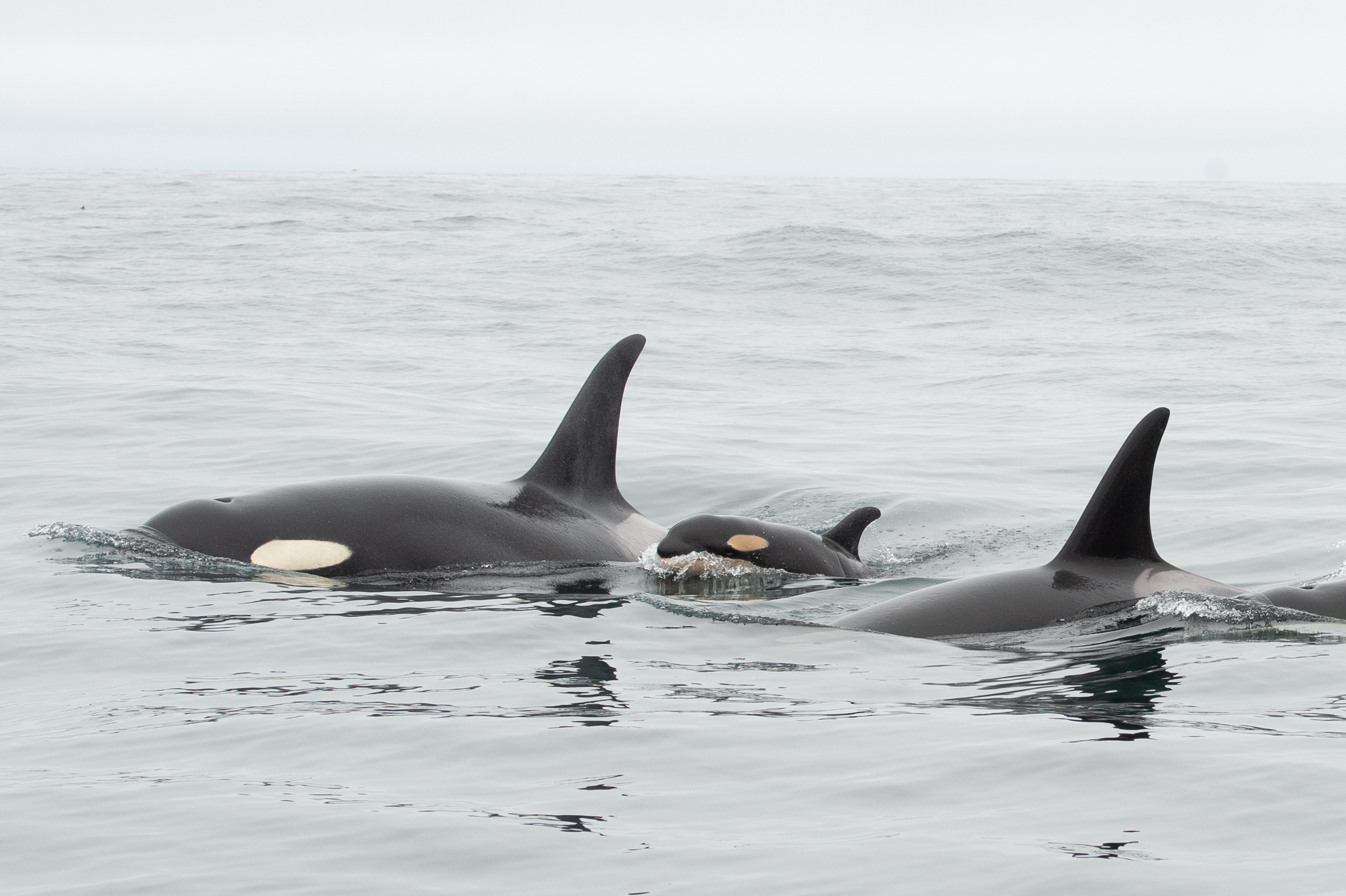BIGGS KILLER WHALES
Killer whales are distinctively marked black-and-white dolphins. While they can be found all over the world, there are three distinct assemblages (groups): residents, Bigg’s (transients) and offshores. Each assemblage has major differences in behaviour and social organization, and subtle differences in appearance such as the dorsal (back) fin and saddle patch. Individual killer whales are commonly identified by patterns in the grey saddle patch located immediately behind the dorsal fin, and by natural markings (scars, nicks, etc.) on the dorsal fin itself.
Resident killer whales social organization is based on small mother-led (matrilineal) groups called matrilines, which can include three to fifteen individuals. Bigg’s may leave their mother’s group around the time they mature. Offshore killer whales are poorly known, but tend to travel in groups of 30 to 60 individuals.
Resident killer whales are very vocal. They echolocate frequently and exchange calls and whistles to maintain contact with each other while traveling and foraging. Resident pods have distinct dialects consisting of a set of 7 to 17 distinct stereotyped calls. All members of a pod will use all of these calls.. Calls do not seem to have specific meanings, such as nouns and verbs in human language, but may be used in different contexts.
In most pods, some calls are unique to the group and some calls are shared with other pods. Shared calls usually have pod-specific "accents." Pods with dialects that have a few calls in common are considered to belong to the same "clan." Pods within a clan have probably descended from a common ancestral group and are therefore more closely related to each other than to pods from other clans. Different clans often occur in the same area and pods from different clans may travel together. Pod-specific dialects probably convey information about pod relationship and are important in maintaining the cohesion and identity of the group. Slight changes to standard call formats communicate additional information such as the identity, location and emotional state of the vocalizing individual.
KILLER WHALE FACTS:
Orcas, or killer whales, are the largest of the dolphins and one of the world's most powerful predators.
Top speed during travel or when chasing prey is roughly 45 km/h.
Mothers give birth every three to ten years, after a 17-month pregnancy.
Newborns are around 2 m long and weigh approximately 150 kg.
Adult males can reach 9.8 m and 10,000 kg; females reach 8.5 m and 7,500 kg.
The dorsal fin of males is approximately 1.7 m tall; females 1 m tall
Field studies in BC suggest that males live to a maximum of 55 years while females may reach 70 - 80 years of age. Average life expectancy is estimated at about 30 years for males and 50 years for females.
Residents’ diet consists almost exclusively of salmon, whereas transients hunt marine mammals.
There are approximately 300 northern and southern resident killer whales and 500(estimated transient killer whales in BC/Washington waters. At least 200 offshore killer whales have also been identified.
Activities of both residents and Bigg’s can be grouped into four major categories: looking for food (foraging), resting, socializing and travelling. All of these seem to happen both day and night.
Typical dive times are less than five minutes; the maximum recorded locally was 15 minutes, in a Bigg's (transient) group.
In Tofino we mostly see Bigg's Transient Killer Whales but the Northern and Southern Resident whales do show up on occasion.
We never know just when the Killer Whales will show up in our waters. If they do we usually post online and at our office if they are in the area.





